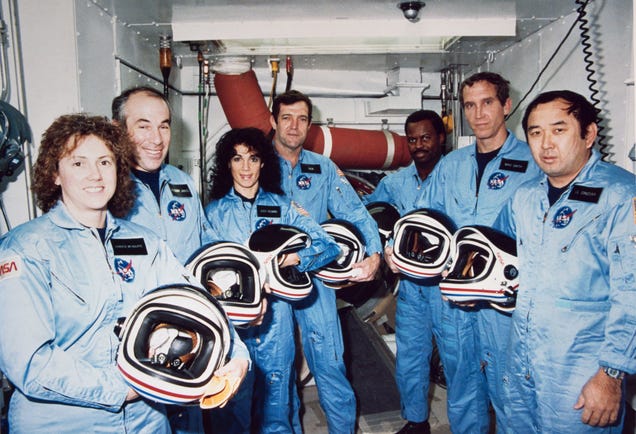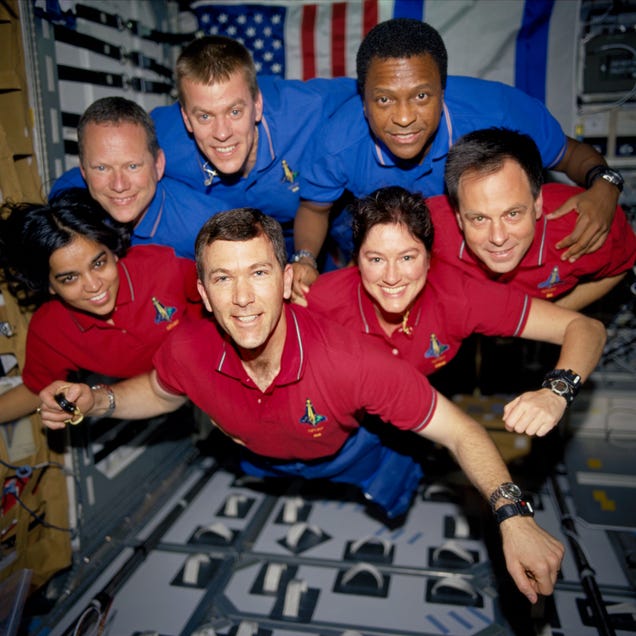He's 100% wrong, but thanks for confirming you're a dope.He's not wrong
Space stuff (NASA, UKSA, CSA, ESA, etc)
- Thread starter strawman
- Start date
More options
Export threadgeez, y'all are a bunch of dopes for not watching Ancient Aliens.......
You mean you watch the most racist show on TV?geez, y'all are a bunch of dopes for not watching Ancient Aliens.......
the insane racism is like, a footnote in all that Ancient Aliens spouts
The Japan Aerospace Exploration Agency has launched another Hayabusa probe. The Hayabusa 2 mission will intercept an asteroid in 2018, land, deploy rovers, and ultimately return samples to Earth in 2020. The asteroid selected will be more of a primordial body than in the first mission. It is hoped that the data collected will provide new insight into the formation of the solar system.
(via The Rocketry Blog and The Japan Times)
(via The Rocketry Blog and The Japan Times)
fade
Staff member
Well, if Ancient Aliens are anything like Ancient Humans, then it makes sense. Nothing is more racist than the conversation ringing through the halls of an old folk's home.You mean you watch the most racist show on TV?
Paging @Squidleybits (everybody else can watch too)
Geminid Meteor Shower this weekend.
Everything you need to know.
Geminid Meteor Shower this weekend.
Everything you need to know.
Oh no! Out if town!!
Can anyone recommend an astrophotography book? I may need to take a picture taking break over the holidays but I can research for sure 

My first attempt at a close up. Pleiades (I think).


GasBandit
Staff member
The SpaceX Falcon 9 rocket almost managed to land itself.
http://www.wired.com/2015/01/difficult-land-rocket/
It didn't quite make it though.
Bear in mind this is actually pretty impressive, because this rocket wasn't actually designed be easy to land - it is just a lifter and has no lateral thrust whatsoever. It's amazing it even got this close. This was AFTER a successful resupply run. It managed to pilot itself down to the landing platform from orbit on its own, it just came down a little hard because, apparently, the maneuvering fins ran out of hydraulic fluid on the way down.
http://finance.yahoo.com/news/spacex-pinpointed-caused-falcon9-rocket-141300639.html
http://www.wired.com/2015/01/difficult-land-rocket/
It didn't quite make it though.
Bear in mind this is actually pretty impressive, because this rocket wasn't actually designed be easy to land - it is just a lifter and has no lateral thrust whatsoever. It's amazing it even got this close. This was AFTER a successful resupply run. It managed to pilot itself down to the landing platform from orbit on its own, it just came down a little hard because, apparently, the maneuvering fins ran out of hydraulic fluid on the way down.
http://finance.yahoo.com/news/spacex-pinpointed-caused-falcon9-rocket-141300639.html
Old article from the NY Times. A graphical representation of the currently confirmed planets found by the Kepler space telescope. I wish that we could set up twenty of them, along with 20 of the James Webb telescope to make a giant interferometer just to get a better view of what is out there.
http://www.nytimes.com/interactive/science/space/keplers-tally-of-planets.html?_r=0
http://www.nytimes.com/interactive/science/space/keplers-tally-of-planets.html?_r=0
Forgot about reading this one. This talks further about the EM-Drive that produces thrust from electricity. I believe GasBandit talked about before, but I'm not certain. Also gives another teams perspective on it after they did some testing, other than the inventors with actual results. That part is interesting. If you have ever worked with magnetrons, you know they do some interesting things. I remember once in one of my classes showing that the magney for a SPS-49 could cause oscillations in a direction just by the field induction causing it to go out of tune. I'm going to have to dig the paperwork out again, and see if would do the same thing. Interesting.
http://nextbigfuture.com/2015/02/more-emdrive-experiment-information.html?m=1
http://nextbigfuture.com/2015/02/more-emdrive-experiment-information.html?m=1
GasBandit
Staff member
I'm not sure I'm reading it right, but 5 x 10^-6 Torr is less force than you'd get from a small aerosol spray can. Methinks you'd still need conventional boosters to get "up to speed" but then could potentially use these EM drives for slow course corrections for as long as you had power - which, if your solar panels and batteries hold up, could be as good as indefinite.
Major changes in direction however would still have to whip around gravity wells, I think.
Wait, no, I AM reading it wrong, that was their reading for what constitutes hard vacuum
Ok, so if I'm reading it right THIS time... maybe not a week, but it'll take less time than with conventional chemical thrusters. It's already apparently stronger than existing tech ion thrusters, and because it doesn't use chemical propellants, it can be fired indefinitely generating 0.4 newtons per kilowatt. Which granted isn't a lot of force, but if you figure in you basically will never run out of fuel so you can more or less be constantly thrusting....
Major changes in direction however would still have to whip around gravity wells, I think.
Wait, no, I AM reading it wrong, that was their reading for what constitutes hard vacuum

Ok, so if I'm reading it right THIS time... maybe not a week, but it'll take less time than with conventional chemical thrusters. It's already apparently stronger than existing tech ion thrusters, and because it doesn't use chemical propellants, it can be fired indefinitely generating 0.4 newtons per kilowatt. Which granted isn't a lot of force, but if you figure in you basically will never run out of fuel so you can more or less be constantly thrusting....
Last edited:
you can more or less be constantly thrusting....
 How YOU doin'?
How YOU doin'?Yeah, I ran into the same problem. I was about 5 miles away from my camera when I spotted it. I suspect it's going to be cloudy here tonight. :/I saw last night. It was fantastic. Shame all I have is a phone camera, because the sky looked amazing with that conflux and the shadows of giant construction equipment.
--Patrick
Cloudy here tonight sadly. Our yard would be perfect to get the picture! I'll try though if it's clear.








